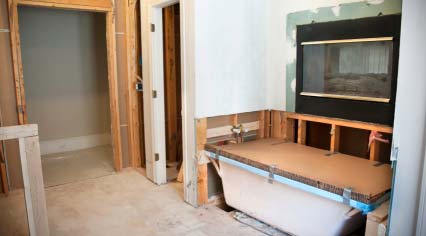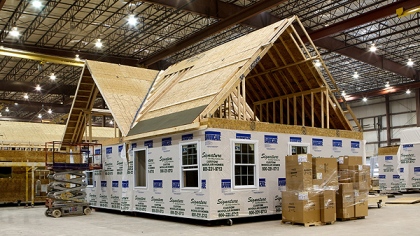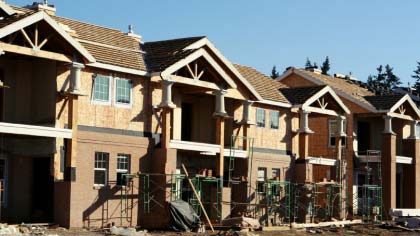Construction Loan Center
Using Construction Loan Calculator? This Glossary Will Help

When you set out to build your dream home, there’s one primary detail that dictates the process: your budget. How will you pay for construction? Unless you have the luxury of being able to cover all of your build costs as they arise, you’ll turn to a construction loan. And using a construction loan calculator can help you determine just how much money you can borrow and what you can expect to pay in interest.
But, just like your construction loan itself, an accurate construction loan calculator is going to need to know a few key details about your loan, including how much your house will be worth once it’s built and how long you expect construction to take. Knowing the terminology for all of these details can help you use a home construction loan calculator to figure out the size of your loan and a construction loan payment calculator to figure out how much you’ll need to pay monthly.
We’ve built a glossary to help you use these tools more easily. Without further ado, read on to learn the key terms you’ll need to know to use a construction loan calculator.
Construction loan calculator glossary
Closing Costs: Unlike traditional mortgages, which require you to come up with the money for closing costs outside of your financing, construction loans include closing costs. They’re calculated as a certain percent of the total construction loan. Your lender uses closing costs to cover processes like underwriting your loan and title insurance.
Construction Term: How long will your construction take? Most construction loans are for terms of 18 months of less. This is important because, at the end of your term, the construction loan will be due in full. But don’t worry. You can refinance it into a mortgage to make it easy to pay for your custom-built dream home.
Contingency Reserve: Construction can be unpredictable. If unexpected costs come up during your build (as they often do), your contingency can help you pay for them. The amount you put into a reserve fund is calculated based off a percentage (usually between 5 and 15 percent) of your hard costs.
Draw Schedule: You probably won’t need the full amount of your loan right away. Rather, you’ll want periodic access to more money as your construction process moves further along. Your lender will establish a draw schedule that dictates how much money they’ll give to you at set points throughout the build.
Future Value: Your lender will want to know how much your house will be worth once it’s built. They’ll use this to calculate your loan-to-value ratio.
Hard Costs: This is how much you’ll pay for the construction itself, including materials and labor.
Interest Rate: Unfortunately, your lender isn’t just going to give you your loan for free. The interest rate is a percentage of the total loan that you’ll have to periodically pay them in exchange for the loan.
Interest Reserve: This amount will be added to your construction loan. The interest reserve makes it possible for you to essentially use your loan itself to finance your interest-only payments during construction.
Interest-Only Payments: Good news. During construction, the only thing you’ll need to pay your lender is the cost of interest. That’s why they’ll call your monthly dues interest-only payments.
Loan Fee: Also known as an origination fee, this is the amount your lender charges to put your loan in place.
Loan Rate: Your interest rate may also be referred to as a loan rate when applying for construction loans.
Loan-to-cost (LTC) Ratio: This ratio compares how much it costs to build your home against the size of your loan. If, for example, your home will cost $100,000 to build and you need the full $100,000, your LTC is 100 percent. Many lenders have a certain LTC ceiling that they won’t go above.
Loan-to-value (LTV) Ratio: This ratio compares the size of your loan to the value of your home once it’s complete. Divide the loan amount by your home’s future value to calculate your LTV. LTVs usually range between 50 and 100 percent.
Lot Value: The land on which you plan to build is worth something. Your construction loan calculator will want to know that amount, as well as the equity you have in it. For example, your lot might be worth $500,000 (the amount you paid for it) and you’ve paid $100,000 down (your equity).
Points: Also called discount points, you can purchase these from your lender to lower your interest rate. Each point is worth 1 percent of your total loan amount. You need to buy points upfront to apply them to your construction loan.
Principal: This is the loan amount you’re borrowing from your lender, not including interest.
Soft Costs: These are the costs associated with your build that aren’t directly connected to the construction itself. They can include architectural and engineering costs, the cost of permits, and more.
This glossary is designed to help you feel confident using a home construction loan calculator. If you still have questions, we can help with that, too. Use our map to find a construction lender in your state who can help you get the information you need.






